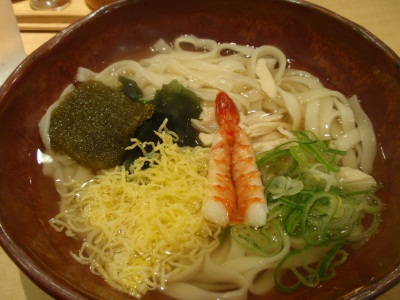The first one on the plane as a One World Emerald member. Too bad I could only land a middle seat.
Port of Nagoya Public Aquarium
Located at the mouth of the Port of Nagoya, the aquarium houses one of the largest displays of marine mammals in Japan. Three orcas share a pool too small for even a single orca calf to be happy in.
 |
| Better in a small tank than on your daughter's school lunch menu. |

The dolphin show featured some nice stunts, but was on the shorter side. Surprisingly, the trainers didn't enter the water with the dolphins, which is a practice even the Osaka Aquarium performs despite not even having a dolphin show. The rest of the aquarium featured sea turtles, penguins, belugas, tuna, sharks, and the like. Not bad for a discounted 1,800 yen with the all-day subway pass.

Nagoya Castle
Nagoya is one of the few Japanese cities that boasts a full-scale castle that once belonged to a shogun. However, the actual castle built in 1610 was destroyed by the U.S. Air Force during World War II, so today's standing structure is a rebuilt version.

The Japanese government and the city of Nagoya did a formidable job in rebuilding the national treasure. However, the refurbished structure will never be as good as the original, and the interior has been modified into a museum, thus ignoring much of the traditional rooms and weapons storage that once stood.

Despite its elegant appearance, Himeji Castle in Kyoto, with its undamaged original design and interior, definitely leads Nagoya Castle by a landslide. The U.S. Air Force definitely left an internal scar here in Nagoya's treasured heritage.
Toyota Commemorative Museum of Industry and Technology
Nagoya is the birthplace of Toyota Motor Corp., the largest automobile company in the world in terms of annual production. The Toyota Commemorative Museum was the actual headquarters of Toyoda Spinning & Weaving Co., where Sakichi Toyoda pioneered the textile machinery industry that paved way to the most successful car company in the world. The museum featured a vast array of textile machinery followed by Toyota's storied automobile history and modern production lines.
Since the museum is owned and operated by Toyota Motor Corp., demos with live personnel as well as interactive machinery abounded. On the other hand, Nagoya Castle lacked both due to their meager government funding.

Conclusion
Although Nagoya can't compare to Tokyo's nightlife or Kansai's national treasures, the city still houses a good blend of attractions and cultural heritage that should not be missed. The subways are crowded, but they're nothing like Tokyo's, where you fight for ever square millimeter during rush hour. And the subway system has extensive coverage and convenient running times, unlike Sapporo, where it's the luck of the draw. Oh, and the food is good too.
 |
| Handmade kishimen noodles, Nagoya's famed staple food source |











Nice photo of Mola mola!
ReplyDeleteFree Willy! No trip report is complete without a hotel review.
ReplyDelete